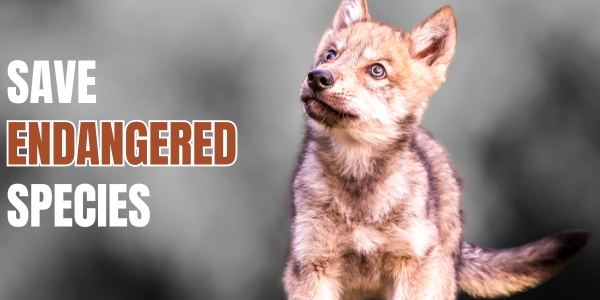Photo credit: Noppadol Paothong
Gunnison sage grouse (Centrocercus minimus) | ESA status: threatened
Gunnison sage grouse
Gunnison sage grouse were officially recognized as a new species of sage grouse in 2000. Like their close relative, the greater sage grouse, they engage in impressive mating rituals and their livelihood is tied to the fate of the sagebrush steppe they call home.
Gunnison sage grouse mating ritual
The Gunnison sage grouse’s annual spring mating display is a rapid series of visual and acoustic cues. Males fan their pointed tail feathers and toss their long, thick filoplumes (hairlike feathers extending back from the nape of the neck) above their heads, puff out their chests, and make an utterly unique popping-gurgling sound from air sacs on their breasts.
Gunnison sage grouse habitat
The species requires large expanses of undisturbed sagebrush steppe with a full complement of sagebrush species, native grasses and wildflowers, and associated riparian ecosystems. While its range may once have included parts of Colorado, Utah, New Mexico, and Arizona, the species now occurs only in seven small populations in southwestern Colorado and southeastern Utah, representing less than 10 percent of its historic distribution.
What are the threats to the Gunnison sage grouse?
Gunnison sage grouse have experienced significant declines from historic numbers. Myriad land uses, including livestock grazing, energy development, motorized recreation, and poor land-use planning have fragmented and eliminated much of their habitat.
The U.S. Fish and Wildlife Service finally declared the species “threatened” under the Endangered Species Act in 2014.
What WildEarth Guardians is doing to help the Gunnison sage grouse
We are working to prevent harmful energy development in Gunnison sage grouse range and advocating for voluntary grazing permit retirement to eliminate livestock grazing in grouse habitat so that this bird may continue to dance into the future.
Historical Significant Actions
U.S. Fish and Wildlife Service lists Gunnison sage grouse as “threatened” November 2014
WildEarth Guardians and partners comment on the proposed listing and critical habitat designation April 2013
U.S. Fish and Wildlife Service proposes to list the Gunnison sage grouse as “endangered” January 2013
U.S. Fish and Wildlife Service proposes critical habitat designation for the Gunnison sage grouse January 2013
Gunnison sage grouse included in landmark settlement with the U.S. Fish and Wildlife Service May 2011
Wildlife Press: Gunnison sage grouse
Settlement parties urge feds to protect climate and wildlife with amendment of Trump-era oil and gas plan for SW Colorado
The Bureau of Land Management must seriously consider closing these lands to new leasing to protect sensitive resources and local communities
Read more >